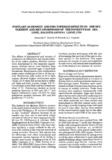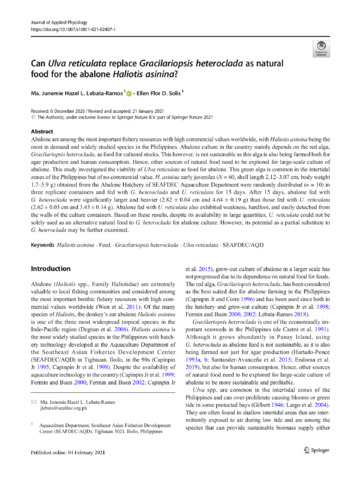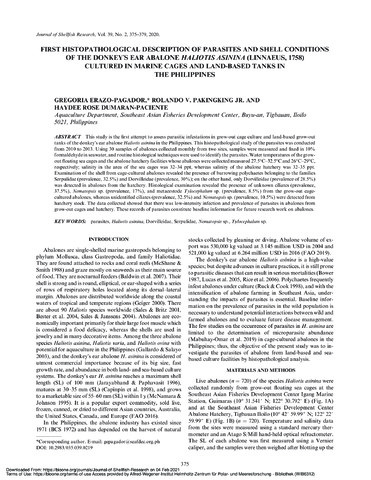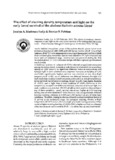Postlarvae density and photoperiod effects on the settlement and metamorphosis of the donkey's ear abalone, Haliotis asinina Linne, 1758
Share
Abstract
The effects of photoperiod and density of postlarvae on settlement and metamorphosis of the native abalone, Haliotis asinina were determined in two separate experiments. Abalone larvae were hatched from spontaneously spawned eggs of tank-held broodstock. Experiments were conducted in static water conditions within a 10 day-period. Post-larvae held under at 24 h light regime showed higher settlement rates (mean: 12 %) than did larvae held at different light-and-dark periods (range: 3-9 %). Larvae kept in the dark had the lowest survival (3 %). Postlarvae stocked at lower stocking densities of 100 and 150 l -1 had higher settlement rates (12-12.5 %) than postlarvae stocked between 200 and 600 postlarvae l -1 (1-5 %).
Suggested Citation
Fermin, A. C., & Gapasin, R. S. J. (2000). Postlarvae density and photoperiod effects on the settlement and metamorphosis of the donkey's ear abalone, Haliotis asinina Linne, 1758. In J. Hylleberg (Ed.), Proceedings of the 10th International Congress and Workshop of the Tropical Marine Mollusc Programme (TMMP), 20-30 October 1999 (Phuket Marine Biological Center Special Publication 21(1), pp. 231-234). Phuket, Thailand: Phuket Marine Biological Center.
Subject
Collections
Related items
Showing items related by title, author, creator and subject.
-
Can Ulva reticulata replace Gracilariopsis heteroclada as natural food for the abalone Haliotis asinina?
Lebata-Ramos, Ma. Junemie Hazel; Solis, Ellen Flor D. (Springer, 2021-02-04)Abalone are among the most important fishery resources with high commercial values worldwide, with Haliotis asinina being the most in demand and widely studied species in the Philippines. Abalone culture in the country ... -
First histopathological description of parasites and shell conditions of the donkey's ear abalone Haliotis asinina (Linnaeus, 1758) cultured in marine cages and land-based tanks in the Philippines
Erazo-Pagador, Gregoria; Pakingking, Rolando V., Jr.; Dumaran-Paciente, Haydee Rose (National Shellfisheries Association, 2020-08-26)This study is the first attempt to assess parasitic infestations in grow-out cage culture and land-based grow-out tanks of the donkey's ear abalone Haliotis asinina in the Philippines. This histopathological study of the ... -
The effect of stocking density, temperature and light on the early larval survival of the abalone Haliotis asinina Linné
Madrones-Ladja, Jocelyn A.; Polohan, Bernice B. (Phuket Marine Biological Center, 2001)Newly hatched trocophore larvae of the abalone haliotis asinina linne were stocked at densities of 1000, 3000 and 5000 larvae/1 at low (20-25oC) and high (ambien, 28-30oC) water temperature levels in ...




